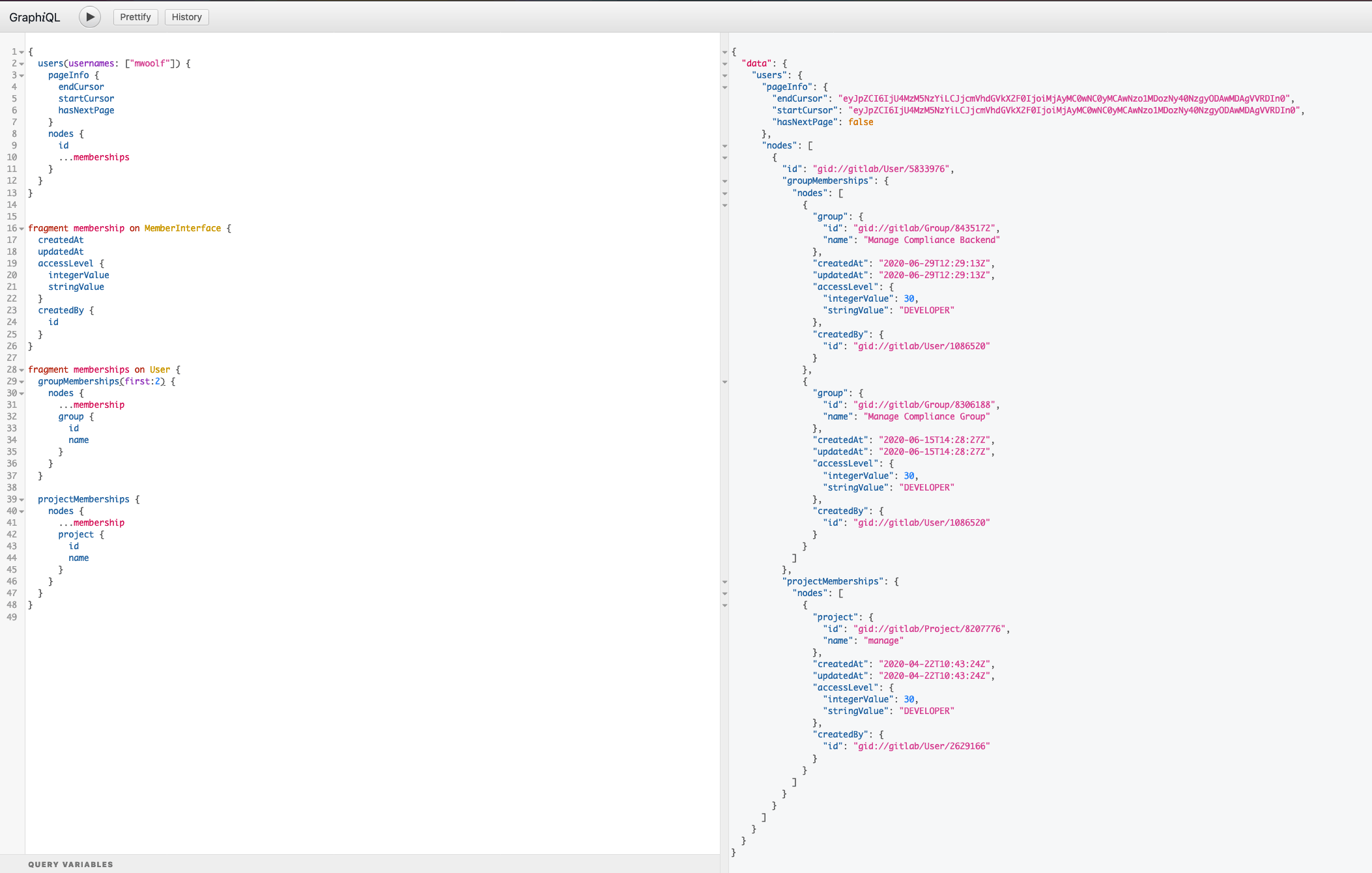Set up an Audit Report with GraphQL
This page describes how you can use the GraphiQL explorer to set up an audit report for a specific subset of users.
You can run the same query directly via a HTTP endpoint, using cURL. For more information, see our
guidance on getting started from the command line.
The example users query looks for a subset of users in a GitLab instance either by username or Global ID. The query includes:
pageInfo
This contains the data needed to implement pagination. GitLab uses cursor-based pagination. For more information, see Pagination in the GraphQL documentation.
nodes
In a GraphQL query, nodes is used to represent a collection of nodes on a graph.
In this case, the collection of nodes is a collection of User objects. For each one,
we output:
- Their user’s
id. - The
membershipfragment, which represents a Project or Group membership belonging to that user. Outputting a fragment is denoted with the...membershipsnotation.
The GitLab GraphQL API is extensive and a large amount of data for a wide variety of entities can be output. See the official reference documentation for the most up-to-date information.
Set up the GraphiQL explorer
This procedure presents a substantive example that you can copy and paste into GraphiQL explorer. GraphiQL explorer is available for:
- GitLab.com users at https://gitlab.com/-/graphql-explorer.
- Self-managed users at
https://gitlab.example.com/-/graphql-explorer.
-
Copy the following code excerpt:
{ users(usernames: ["user1", "user2", "user3"]) { pageInfo { endCursor startCursor hasNextPage } nodes { id ...memberships } } } fragment membership on MemberInterface { createdAt updatedAt accessLevel { integerValue stringValue } createdBy { id } } fragment memberships on User { groupMemberships { nodes { ...membership group { id name } } } projectMemberships { nodes { ...membership project { id name } } } } - Open the GraphiQL explorer tool.
- Paste the
querylisted above into the left window of your GraphiQL explorer tool. - Select Play to get the result shown here:
This GraphQL query returns the groups and projects that the user has been explicitly made a member of. Since the GraphiQL explorer uses the session token to authorize access to resources, the output is limited to the projects and groups accessible to the currently authenticated user.
If you’ve signed in as an instance administrator, you would have access to all records, regardless of ownership.
For more information on:
- GraphQL specific entities, such as Fragments and Interfaces, see the official GraphQL documentation.
- Individual attributes, see the GraphQL API Resources.
